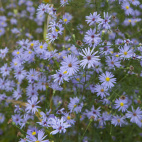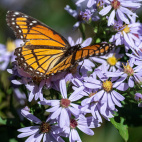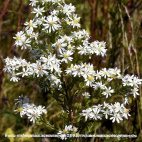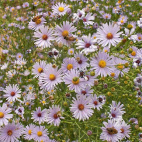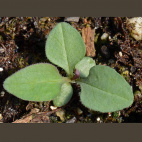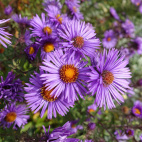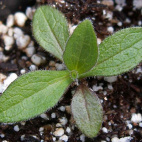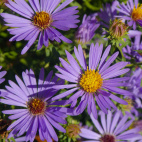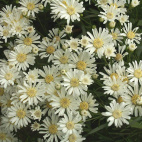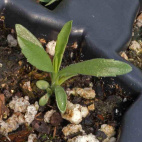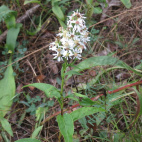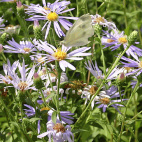Silky Aster Seeds
- HOW TO GROW
- FAST FACTS
- REVIEWS
HOW TO GROW
Sowing: Direct sow the seed in late fall, planting it just under the surface and watering it once. If direct sown in the spring, the seed must be stratified first by mixing it with moist sand and stored in the refrigerator for 60 days. To start the stratified seed indoors, sow it in a flat; keep the soil evenly moist and at a temperature of 65-70 degrees F until germination, which should take place within 14-20 days. Transplant the seedlings after the last frost of spring.
Growing: This plant prefers full sun and medium to dry soil, and also grows well in sandy or rocky soil. It tolerates drought, though it grows best with regular watering. This plant grows rather slowly. As the plant grows taller, it tends to become top heavy and may need support or staking. The lower leaves have a tendency to wither in dry weather. Keep weeds under control, since this plant does not like competition. Mature plants will benefit from division after two or three years of growth. Cut the stalks down to the ground at the end of the growing season for easier growth in the spring. The flowers attract numerous bees and butterflies, providing a valuable source of nectar in late fall.
Harvesting: Asters make lovely cut flowers. Cut the stems long, choosing flowers that have just opened.
Seed Saving: After flowering, the plant will produce seed heads containing small clusters of seed with white fluff. Since sparrows and goldfinches love to eat the seed, harvest it promptly to avoid loss. Cut the mature seed heads, or shake them into a container to remove the seed material. Clean the seed as well as possible, then store it in a cool, dry place.
FAST FACTS
Common Names: Western Silver Aster
Latin Name: Aster sericeus
Species Origin: US Native Wildflower
Type: Native Wildflowers
Life Cycle: Perennial
USDA Zones: 3, 4, 5, 6, 7, 8
US Regions: Plains/Texas, Midwest
Seeds per Ounce: 41,500
Stratification: Cold/Wet for 8 Weeks
Germination Ease: Stratify 8 Weeks
Sunlight: Full Sun, Part Sun
Height: 10 Inches
Color: Purple
Bloom Season: Blooms Early Fall, Blooms Late Fall
Uses: Attracts Pollinators, Attracts Honeybees, Attracts Butterflies, Cut Flowers
More organic options, please.
Please make USDA certified native plants seeds available to the public not just vegetables for human consumption.
I appreciate how your company sent the seeds in paper based packaging as requested and no plastic tape was used.
DESCRIPTION

HOW TO GROW
Sowing: Direct sow the seed in late fall, planting it just under the surface and watering it once. If direct sown in the spring, the seed must be stratified first by mixing it with moist sand and stored in the refrigerator for 60 days. To start the stratified seed indoors, sow it in a flat; keep the soil evenly moist and at a temperature of 65-70 degrees F until germination, which should take place within 14-20 days. Transplant the seedlings after the last frost of spring.
Growing: This plant prefers full sun and medium to dry soil, and also grows well in sandy or rocky soil. It tolerates drought, though it grows best with regular watering. This plant grows rather slowly. As the plant grows taller, it tends to become top heavy and may need support or staking. The lower leaves have a tendency to wither in dry weather. Keep weeds under control, since this plant does not like competition. Mature plants will benefit from division after two or three years of growth. Cut the stalks down to the ground at the end of the growing season for easier growth in the spring. The flowers attract numerous bees and butterflies, providing a valuable source of nectar in late fall.
Harvesting: Asters make lovely cut flowers. Cut the stems long, choosing flowers that have just opened.
Seed Saving: After flowering, the plant will produce seed heads containing small clusters of seed with white fluff. Since sparrows and goldfinches love to eat the seed, harvest it promptly to avoid loss. Cut the mature seed heads, or shake them into a container to remove the seed material. Clean the seed as well as possible, then store it in a cool, dry place.
FAST FACTS
Common Names: Western Silver Aster
Latin Name: Aster sericeus
Species Origin: US Native Wildflower
Type: Native Wildflowers
Life Cycle: Perennial
USDA Zones: 3, 4, 5, 6, 7, 8
US Regions: Plains/Texas, Midwest
Seeds per Ounce: 41,500
Stratification: Cold/Wet for 8 Weeks
Germination Ease: Stratify 8 Weeks
Sunlight: Full Sun, Part Sun
Height: 10 Inches
Color: Purple
Bloom Season: Blooms Early Fall, Blooms Late Fall
Uses: Attracts Pollinators, Attracts Honeybees, Attracts Butterflies, Cut Flowers
Reviews
Review
More organic options, please.
Please make USDA certified native plants seeds available to the public not just vegetables for human consumption.
I appreciate how your company sent the seeds in paper based packaging as requested and no plastic tape was used.
Also Consider These:
-
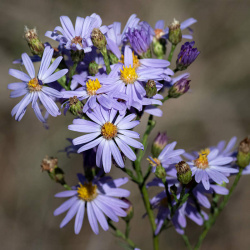 On Sale!
Sky Blue Aster Seeds
Aster azureus
Quick View
x
On Sale!
Sky Blue Aster Seeds
Aster azureus
Quick View
xSky Blue Aster Seeds
Starting at $3.75 USD -
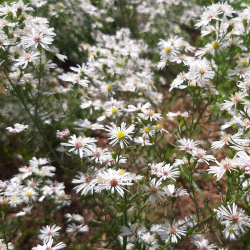 On Sale!
Heath Aster Seeds
Aster ericoides
Quick View
x
On Sale!
Heath Aster Seeds
Aster ericoides
Quick View
xHeath Aster Seeds
Starting at $3.75 USD -
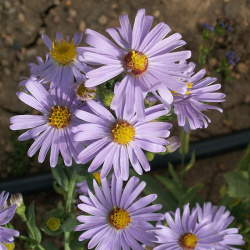 Smooth Blue Aster Seeds
Aster laevis
Quick View
x
Smooth Blue Aster Seeds
Aster laevis
Quick View
xSmooth Blue Aster Seeds
Starting at $3.75 USD -
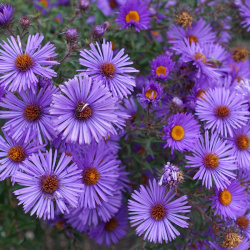 New England Aster Seeds
Aster novae-angliae
Quick View
x
New England Aster Seeds
Aster novae-angliae
Quick View
xNew England Aster Seeds
Starting at $3.48 USD -
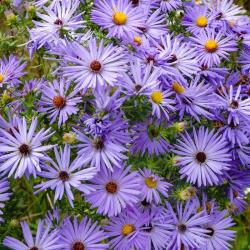 On Sale!
Aromatic Aster Seeds
Aster oblongifolius
Quick View
x
On Sale!
Aromatic Aster Seeds
Aster oblongifolius
Quick View
xAromatic Aster Seeds
Starting at $3.75 USD -
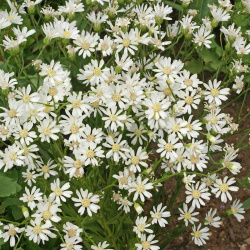 On Sale!
White Upland Aster Seeds
Aster ptarmicoides
Quick View
x
On Sale!
White Upland Aster Seeds
Aster ptarmicoides
Quick View
xWhite Upland Aster Seeds
Starting at $3.48 USD -
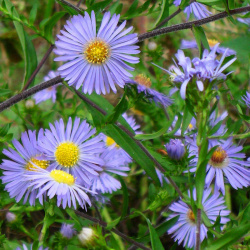 Swamp Aster Seeds
Aster puniceus
Quick View
x
Swamp Aster Seeds
Aster puniceus
Quick View
xSwamp Aster Seeds
Starting at $3.75 USD -
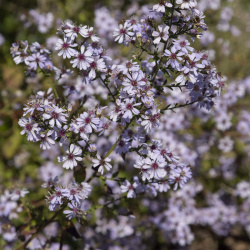 Arrow Leaved Aster Seeds
Aster sagittifolius
Quick View
x
Arrow Leaved Aster Seeds
Aster sagittifolius
Quick View
xArrow Leaved Aster Seeds
Starting at $3.75 USD -
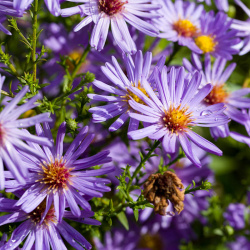 Out of Stock
Showy Aster Seeds
Aster spectabilis
Quick View
x
Out of Stock
Showy Aster Seeds
Aster spectabilis
Quick View
xShowy Aster Seeds
Starting at $3.48 USD






